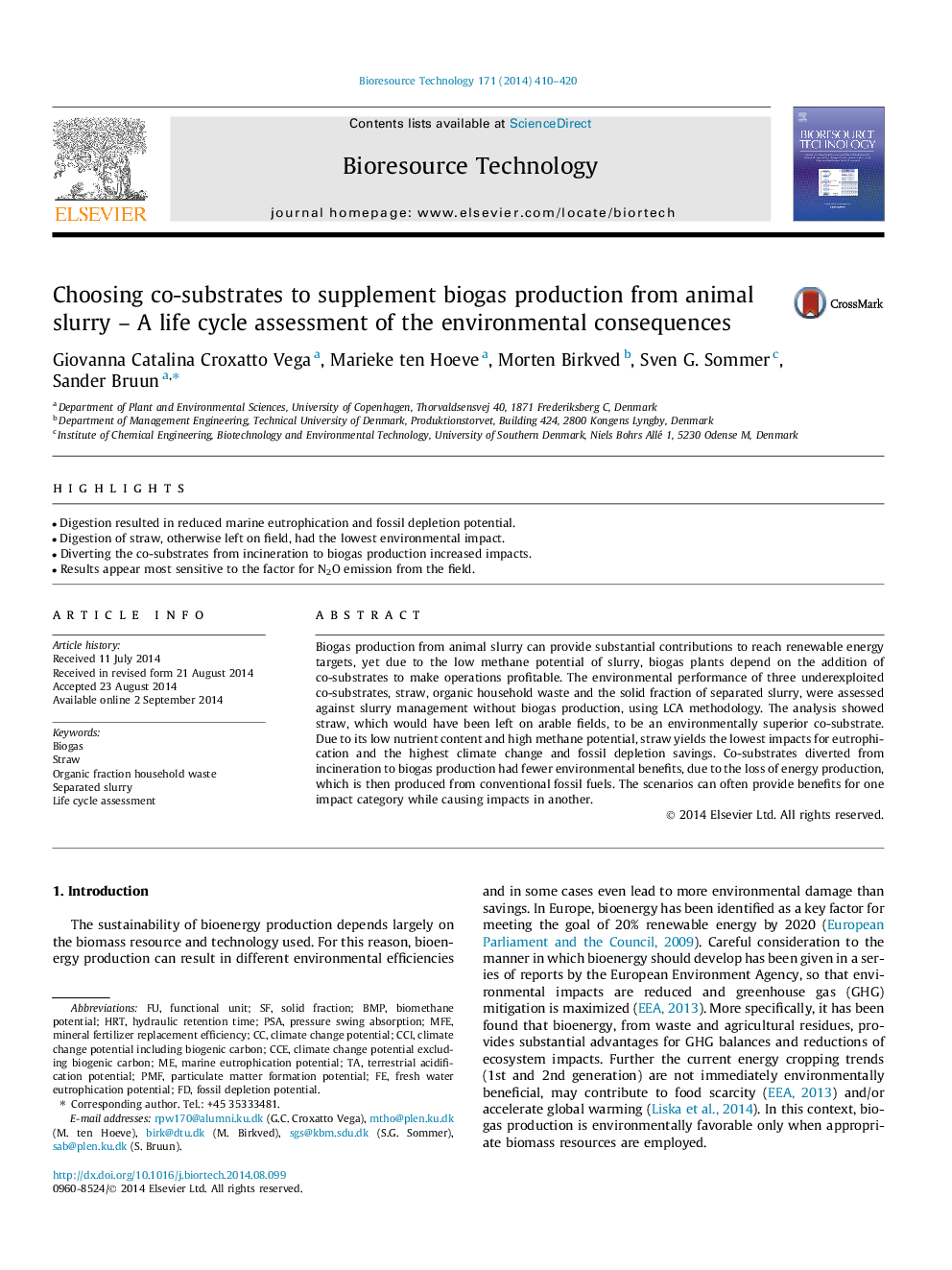| Article ID | Journal | Published Year | Pages | File Type |
|---|---|---|---|---|
| 680376 | Bioresource Technology | 2014 | 11 Pages |
•Digestion resulted in reduced marine eutrophication and fossil depletion potential.•Digestion of straw, otherwise left on field, had the lowest environmental impact.•Diverting the co-substrates from incineration to biogas production increased impacts.•Results appear most sensitive to the factor for N2O emission from the field.
Biogas production from animal slurry can provide substantial contributions to reach renewable energy targets, yet due to the low methane potential of slurry, biogas plants depend on the addition of co-substrates to make operations profitable. The environmental performance of three underexploited co-substrates, straw, organic household waste and the solid fraction of separated slurry, were assessed against slurry management without biogas production, using LCA methodology. The analysis showed straw, which would have been left on arable fields, to be an environmentally superior co-substrate. Due to its low nutrient content and high methane potential, straw yields the lowest impacts for eutrophication and the highest climate change and fossil depletion savings. Co-substrates diverted from incineration to biogas production had fewer environmental benefits, due to the loss of energy production, which is then produced from conventional fossil fuels. The scenarios can often provide benefits for one impact category while causing impacts in another.
